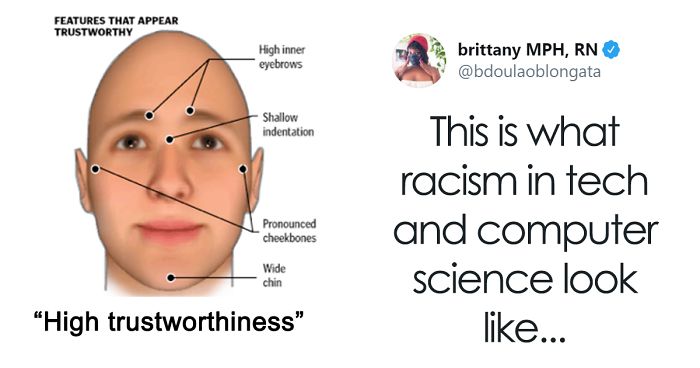
New AI Tells If A Person Is Perceived As ‘Trustworthy’ Based On Their Face And Some People Find It Problematic
InterviewFrench researcher Nicolas Baumard shared news about his and his colleagues’ latest research only to create a fierce storm of debate. Now, Twitter users are divided about how to react to the algorithm that automatically evaluates the ‘perceived trustworthiness’ of faces in historic European portraits.
Some people were interested to read Baumard’s insights about rising perceived trustworthiness levels in paintings over time and how they correlated to the appearance of liberal values and better living standards. But others went on the warpath. Some Twitter users branded the algorithm as ‘racist’ and linked it to phrenology. Meanwhile, others said that critics may not have read or understood the paper fully and rushed to conclusions.
Bored Panda reached out to the researchers. According to head researcher Lou Safra, the algorithm never intended to detect who is trustworthy or not but who would be perceived as trustworthy or not. “These are of course two different things: someone may appear untrustworthy and be very nice and, on the opposite, someone may be always looking nice and exploit people’s trust all the time. We were interested in measuring whether people want to look friendly.” Read on for Safra’s other insights and clarifications.
You can read the full research paper right here.
This tweet saying that the research and the algorithm were allegedly ‘racist’ went viral
Image credits: bdoulaoblongata
Image credits: baumard_nicolas
One of the study’s researchers put the algorithm into context and explained everything in detail
Image credits: baumard_nicolas
Image credits: baumard_nicolas
Image credits: baumard_nicolas
Image credits: baumard_nicolas
Image credits: baumard_nicolas
Image credits: baumard_nicolas
Image credits: baumard_nicolas
Image credits: baumard_nicolas
Image credits: baumard_nicolas
Image credits: baumard_nicolas
Image credits: baumard_nicolas
“When people take a picture of themselves for professional purposes, they may choose a particular pose and facial expression in order to advertise that they are competent in their job. However, they may choose a different pose and facial expression if they choose a picture for social media because they want to convey a different message. The type of message people were willing to convey is exactly what we were interested in, but at the historical level,” Safra gave an example.
Researcher Safra explained: “We based our analysis on existing data in social cognition showing that people from different cultures agree on some of the facial features that are associated with more or less perceived trustworthiness—it thus seems that some of the elements guiding impressions of trustworthiness are ‘shared’ by different cultures. Of course, it does not imply that everybody will agree on whether or not a specific face appears trustworthy.”
The researcher continued: “First impressions people form from faces are indeed influenced by individual-specific features (such as the persons you met before and the type of social interaction you had with them) but they are also influenced by these ‘shared’ elements. Based on the fact that these ‘shared’ elements are used by people from different cultures and based also on theoretical work on the evolution of emotional expression, we made the hypotheses that some of these ‘shared’ elements were also perceived as displays of trustworthiness in the past.”
According to Safra, if we asked today’s participants how trustworthy a sitter on a painting of the 16th century looks, they might use cues such as the outfit and painting style or even their knowledge about this period for making inferences. “In other words, cues that had a completely different meaning in the 16th century. This is why we designed an algorithm that is blinded to these irrelevant cues and that only produces perceived trustworthiness scores based on the ‘shared’ elements,” Safra said.
“More precisely, we trained our algorithm on avatars representing people from different ethnicities and that have been shown to vary in their degree of perceived trustworthiness in different populations—this was completely automated (we did not decide which trait to include) and based on previously validated research. Our goal was really to create a tool for measuring how much people from the past wanted to advertise trustworthiness in their portraits— nothing to do with inferring their actual level of trustworthiness or with profiling.”
Image credits: baumard_nicolas
While some Twitter users have said that the researchers are essentially conducting phrenology, this isn’t the case: it’s not about detecting personality traits from the shape of the skull but about detecting the facial expressions chosen by the painter or the subject. These expressions show what people choose to signal as their cultural environment changes.
Baumard’s research found that perceived trustworthiness in portraits between the years 1500 and 2000 increased, alongside a drop in interpersonal violence, as well as the rise of democratic values in Western Europe. Among these liberal values are religious tolerance and political freedom.
What’s more, the research suggests that the rise of displays of trustworthiness is closely linked to increased living standards. These include better economic performance, lower crime rates, and more inclusive institutions.
So, in short, as people have more and more money, and their quality of life increases, they’re more likely to trust others and to display themselves in a trustworthy manner. And this is expressed more and more through the paintings that artists draw.
According to the researchers, their results were consistent with other research documenting the so-called ‘Smile Revolution’ and “a rise of prosocial displays in paintings and in novels.” Baumard also drew attention to their findings that those people who live in places where trust and cooperation are higher displayed higher levels of trustworthiness in their selfies.
People had a lot to say about the results and both criticized and defended the research
Image credits: YOONGIIll
Image credits: tymwol
Image credits: Meliseymo
Image credits: YoungOG_RV
Image credits: ApplecookedDane
Image credits: DrUnicornPhD
Image credits: miniMaiasaura
Image credits: SamColl58124830
Image credits: ravlun
Image credits: AyoSwain
Image credits: AyoSwain
Image credits: deep_sea_blob
Image credits: alienjames2000
Image credits: Kaldorei_Life
Image credits: Kaldorei_Life
35Kviews
Share on FacebookI think the Biden VS Trump one is bias since you need a grumpy picture of both for a fair comparison.
Well anything about politics here is definitely wrong. Not saying any of them are better than the other because politicians are crappy biologists.
Load More Replies...Do not politicise scientific research, paricularly if you do not fully understand it!
I think that whether we trust people with certain facial features or not depends mostly on our personal experience. Some faces may appear more aggressive (higher levels of certain hormones do change our facial expression), and who would trust an aggressive person? In most cases, one would be wary or would try to stay away, I think.
I think the Biden VS Trump one is bias since you need a grumpy picture of both for a fair comparison.
Well anything about politics here is definitely wrong. Not saying any of them are better than the other because politicians are crappy biologists.
Load More Replies...Do not politicise scientific research, paricularly if you do not fully understand it!
I think that whether we trust people with certain facial features or not depends mostly on our personal experience. Some faces may appear more aggressive (higher levels of certain hormones do change our facial expression), and who would trust an aggressive person? In most cases, one would be wary or would try to stay away, I think.

 Dark Mode
Dark Mode 

 No fees, cancel anytime
No fees, cancel anytime 








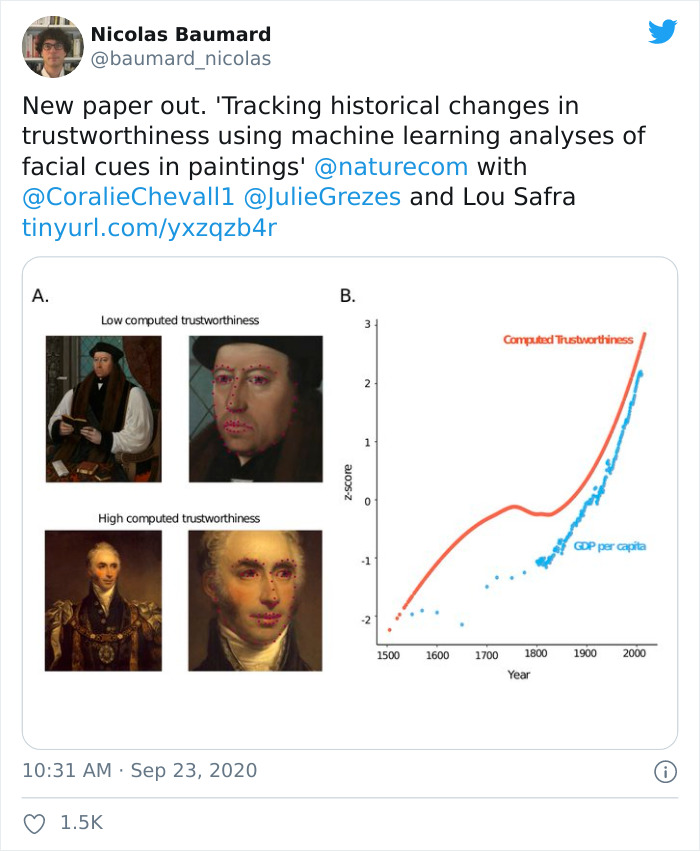
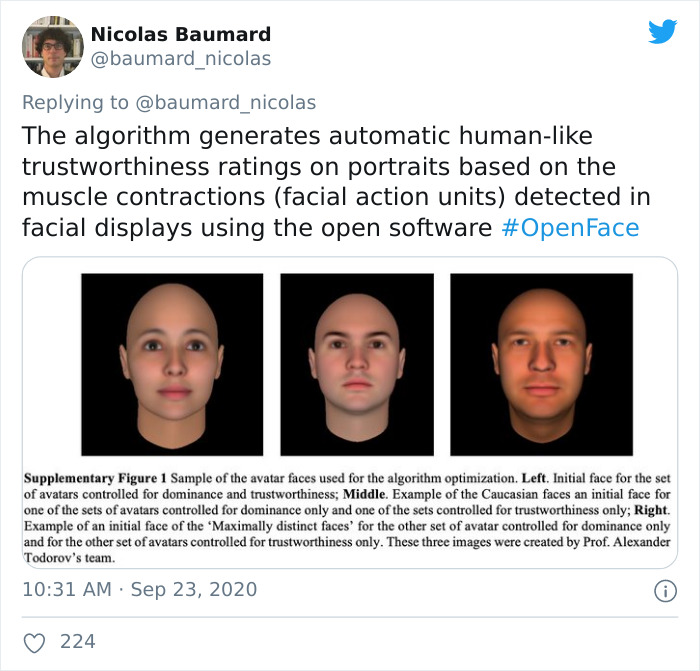
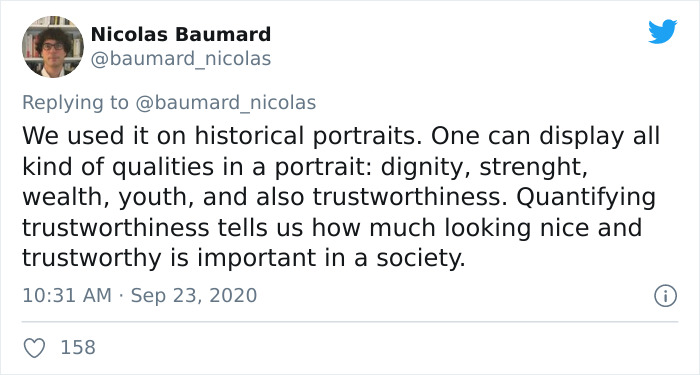

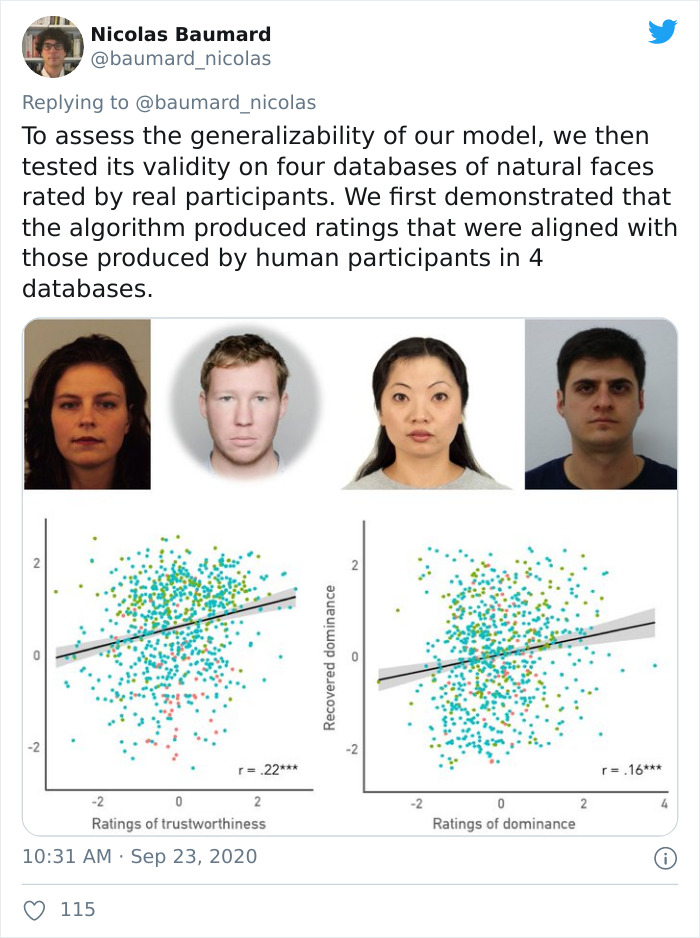
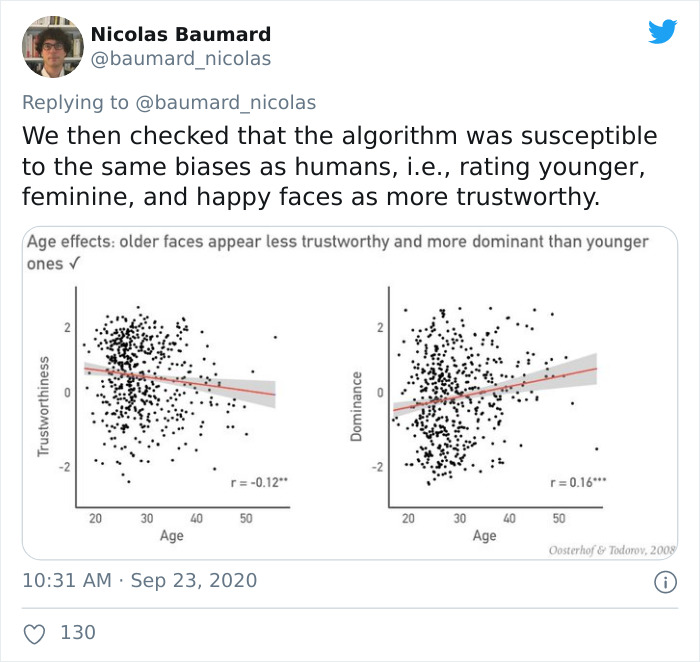
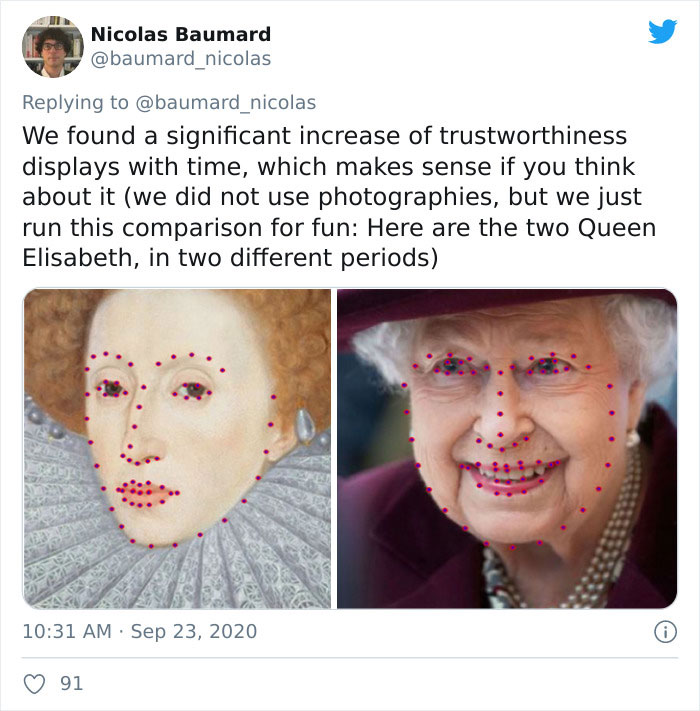
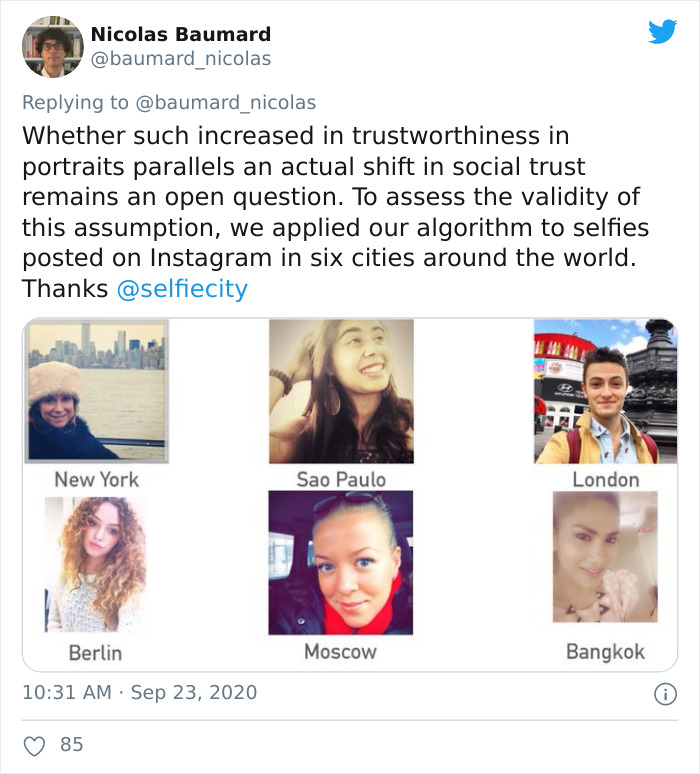
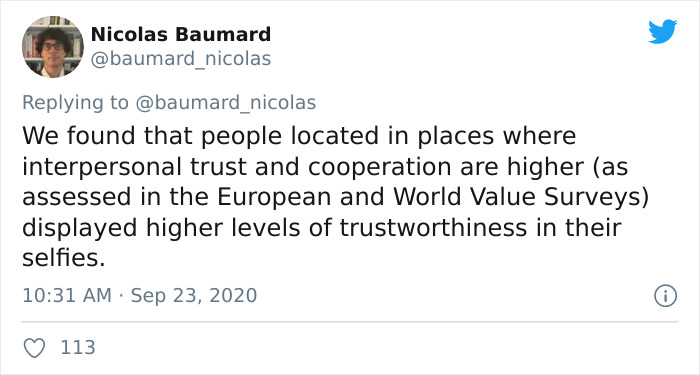
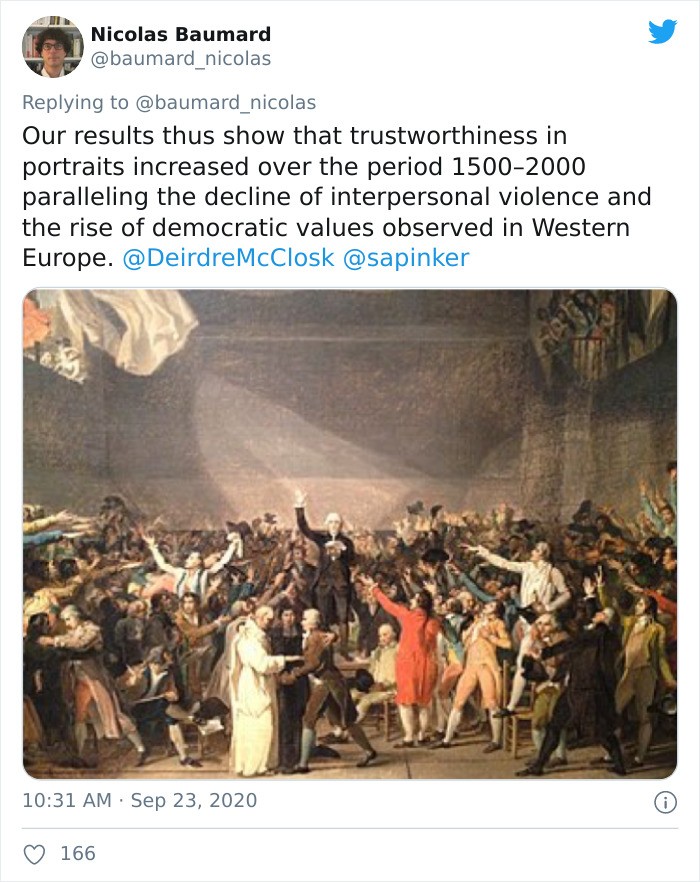
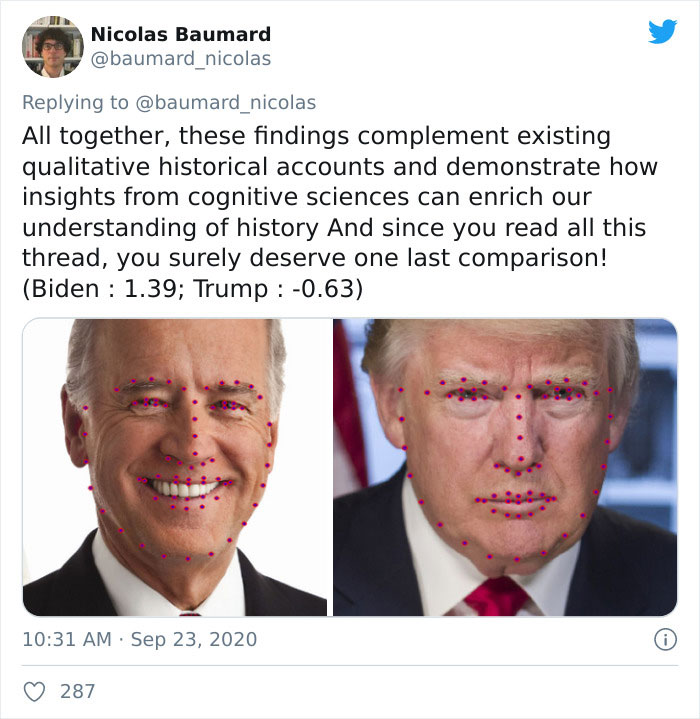


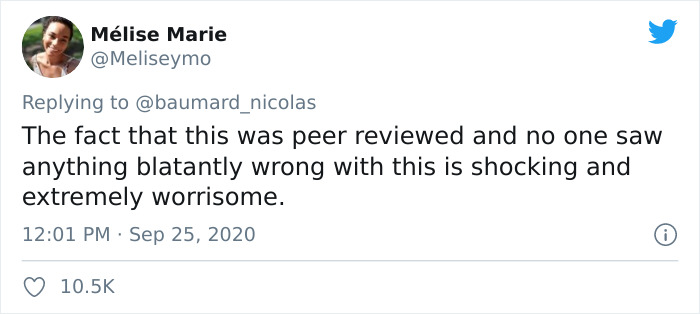
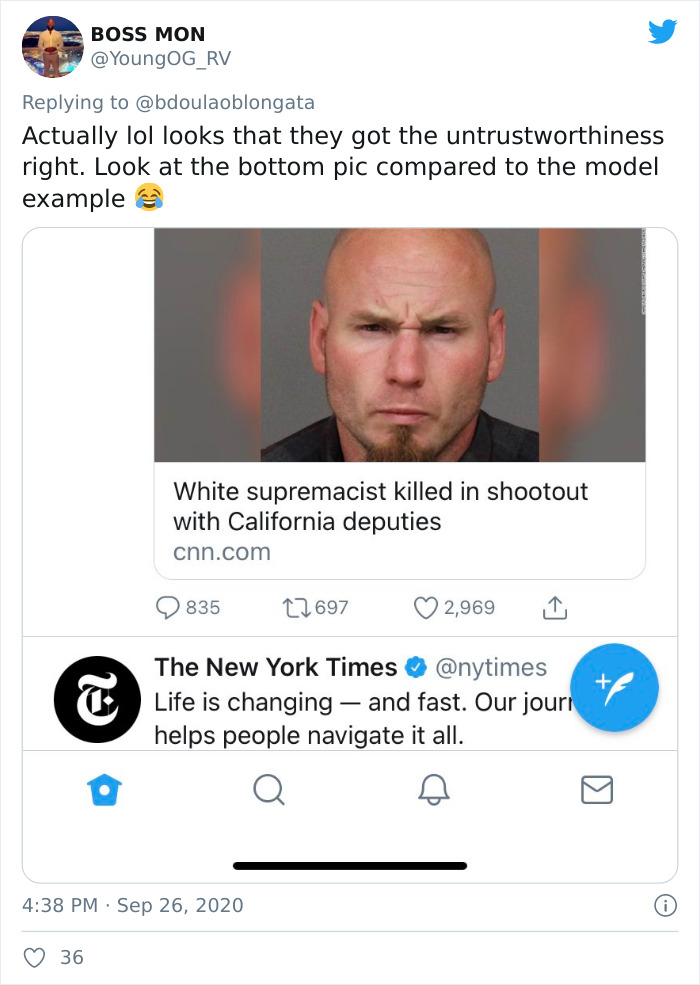


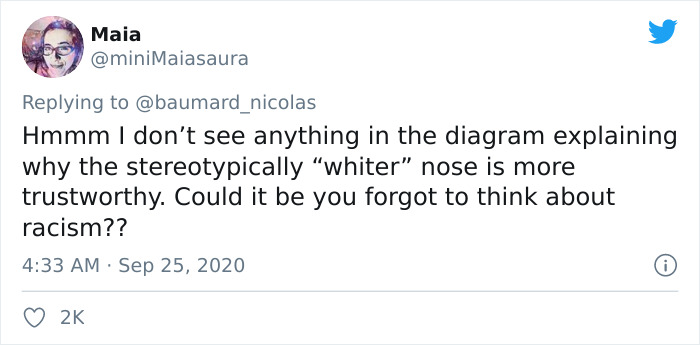

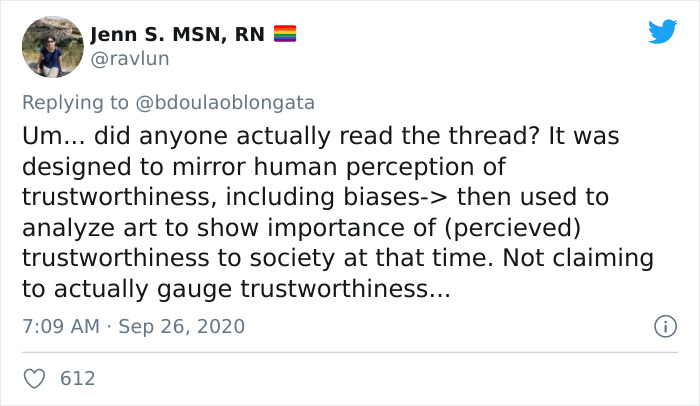

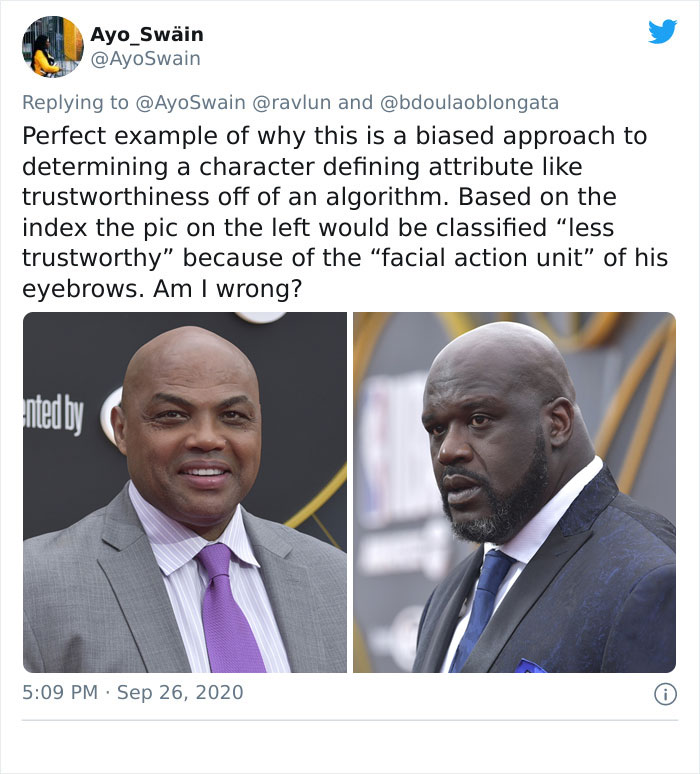
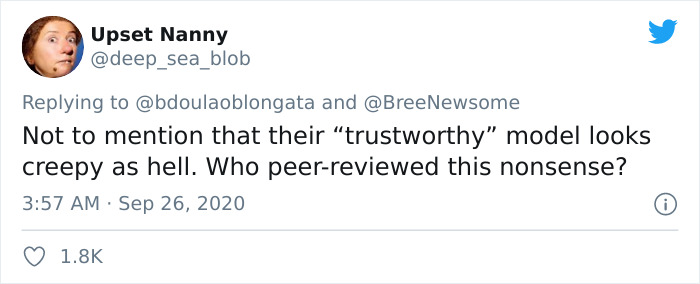
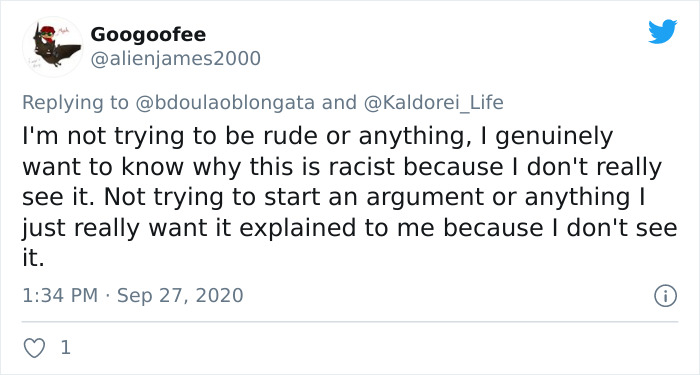
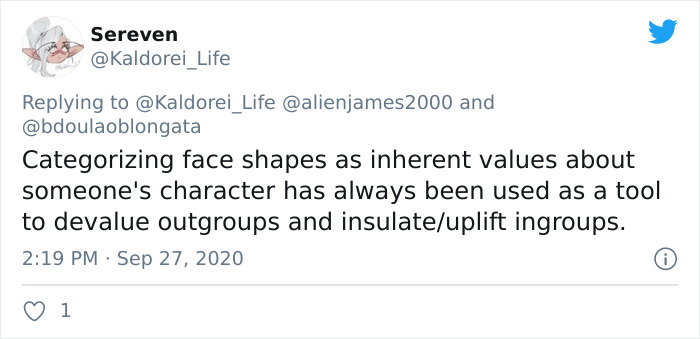
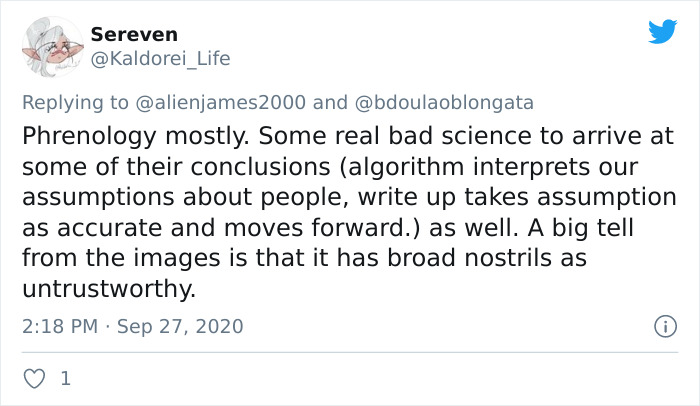













































47
79